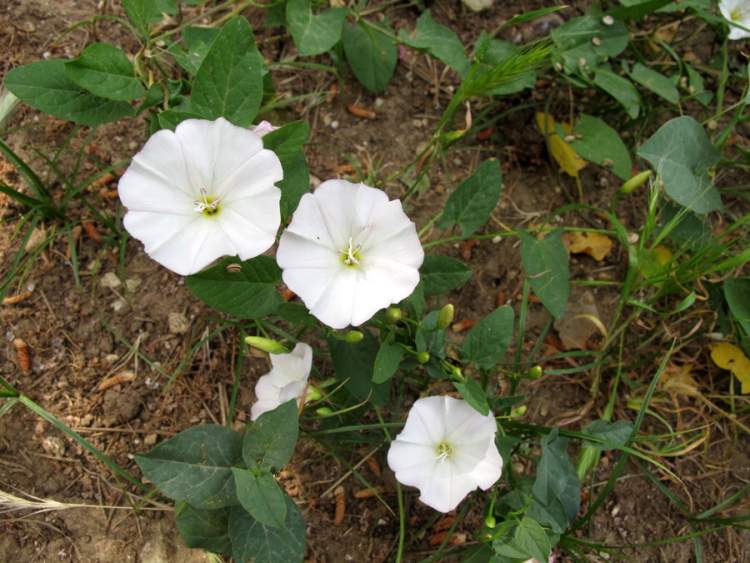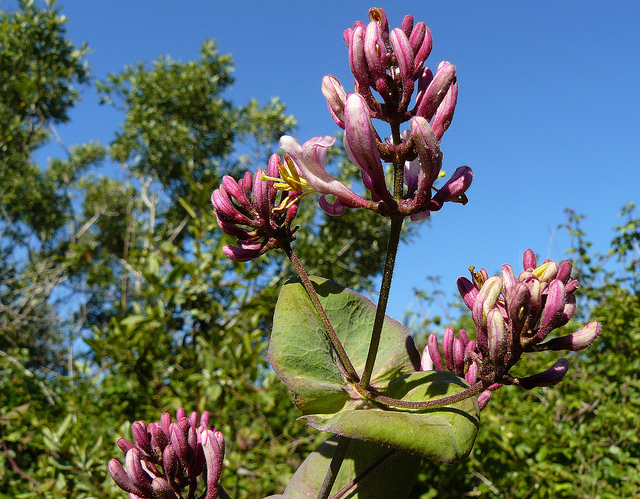Weed of the Month: Bindweeds (Calystegia and Convolvulus spp.)
Characteristics
Bindweeds—also known as morning glories—are a group of perennial twining vines that support themselves by binding to other plants. Because of this, it is easy to mistakenly think the flower belongs to the supporting plant. There are hundreds of varieties, many of which are well-behaved ornamental cultivars; two that are problematic are hedge bindweed (Calystegia sepium) and field bindweed (Convolvulus arvensis). Leaves of both are arrow-shaped and alternate, 5-10 cm (2-4 in) long for hedge and 2-5 cm (3/4 – 2 in) long for field bindweed. The flowers are typically white to pink in both bindweeds, 5-8 cm (2-3 inches) in diameter for hedge and 1-2.5 cm (.5-1 in) for field bindweed, and are composed of 5 petals that are united to form a funnel-shaped corolla. Bindweed blooms from May through August.
Spread
Both bindweeds seed quite prolifically (up to 500 seeds/plant), and seeds are long-lived (20-30 years) in soil. The extensive root system will readily send up new shoots if disturbed, and root fragments can also re-sprout after removal if left in contact with soil. Once established, bindweeds are very difficult to remove.
Control
Organic control of field bindweed is not easy, and it cannot be accomplished with a single treatment or in a single season. Effective control requires prevention of seed production, reduction of stored carbohydrates by deep tillage of the root system, competition for light from other plants, and constant vigilance in removing top growth.
Native replacement
Hairy honeysuckle (Lonicera hispidula) produces showy, pink trumpet-shaped flowers, and will grow in the open, sunny locales favored by bindweeds.


